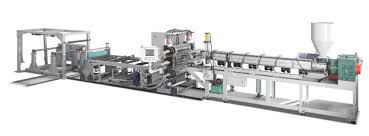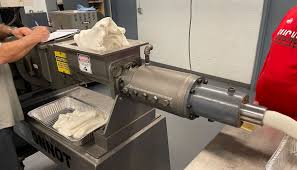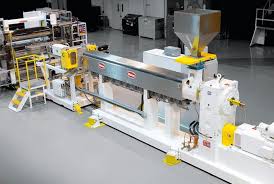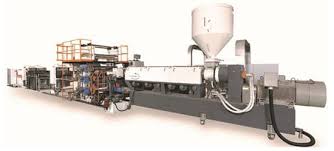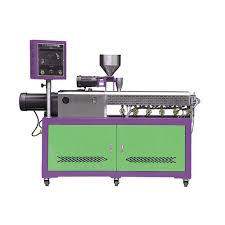Hydrocolloid Extruder: Precision Equipment for Gel-Based and Functional Food Processing
In the world of food science, pharmaceuticals, and nutraceuticals, hydrocolloids play a vital role in texture modification, moisture retention, and controlled release. As demand for functional foods and specialized medical formulations grows, so does the need for precise processing tools—enter the hydrocolloid extruder.
A hydrocolloid extruder is a specialized machine designed to process gel-like materials such as agar, pectin, gelatin, xanthan gum, carrageenan, and starch-based compounds. This equipment is used to shape, form, and solidify hydrocolloid-based mixtures into consistent structures such as strands, beads, films, or molded shapes.
What Is a Hydrocolloid Extruder?
A hydrocolloid extruder operates similarly to a traditional food or pharmaceutical extruder but is engineered to handle moisture-rich, thermosensitive, or shear-sensitive materials. These extruders are typically single- or twin-screw systems with precise temperature and pressure controls, optimized for low-temperature processing and gentle handling of complex biopolymers.
Key Applications
Medical and Dental Products: Production of hydrocolloid-based wound dressings or orthodontic materials.
Functional Food Processing: Shaping low-calorie, fiber-rich, or gel-based snacks and supplements.
Encapsulation: Creating hydrocolloid-coated capsules or beads for controlled ingredient release.
Texturizing and Shaping: Producing plant-based meats, gelatin-based candies, or soft nutritional chews.
3D Food Printing and Prototyping: Used in advanced extrusion systems for experimental formulations.
Key Features of a Hydrocolloid Extruder
Precise Temperature Control: Crucial for preserving gelation properties and preventing thermal breakdown.
Low Shear Processing: Maintains the structure of sensitive hydrocolloid networks.
Sanitary Design: Stainless steel contact surfaces, CIP (Clean-in-Place) options, and FDA/USDA compliance.
Modular Screw Configuration: Enables customized processing for various viscosities and gel strengths.
Integrated Cooling Systems: Essential for setting gel-based products post-extrusion.
Benefits of Using a Hydrocolloid Extruder
Consistent Product Quality: Ensures uniform gel texture, thickness, and shape.
Enhanced Formulation Control: Allows for the testing of different gel ratios, ingredients, and setting profiles.
Scale-Up Capability: From lab-scale prototyping to industrial production.
Versatility: Can process a wide range of hydrocolloid blends and biomaterials.
Efficient Material Use: Minimizes waste, especially when working with high-value or sensitive ingredients.
How to Choose the Right Hydrocolloid Extruder
When selecting a hydrocolloid extruder, consider:
Material Type: Different hydrocolloids (e.g., agar vs. carrageenan) require different screw designs and temperature zones.
Batch Size: Choose between lab-scale extruders for R&D or continuous extruders for production.
End Product Form: Whether you're making sheets, rods, capsules, or 3D shapes.
Automation and Control: PLC touchscreens, data logging, and real-time process monitoring enhance repeatability.
Cleaning and Maintenance: Sanitary and modular designs improve uptime and hygiene.
Conclusion
A hydrocolloid extruder is an indispensable tool for food technologists, pharmaceutical engineers, and R&D labs developing gel-based, functional, or bioactive products. By offering precision, gentle processing, and unmatched versatility, it enables innovation in some of the most exciting areas of modern manufacturing.


